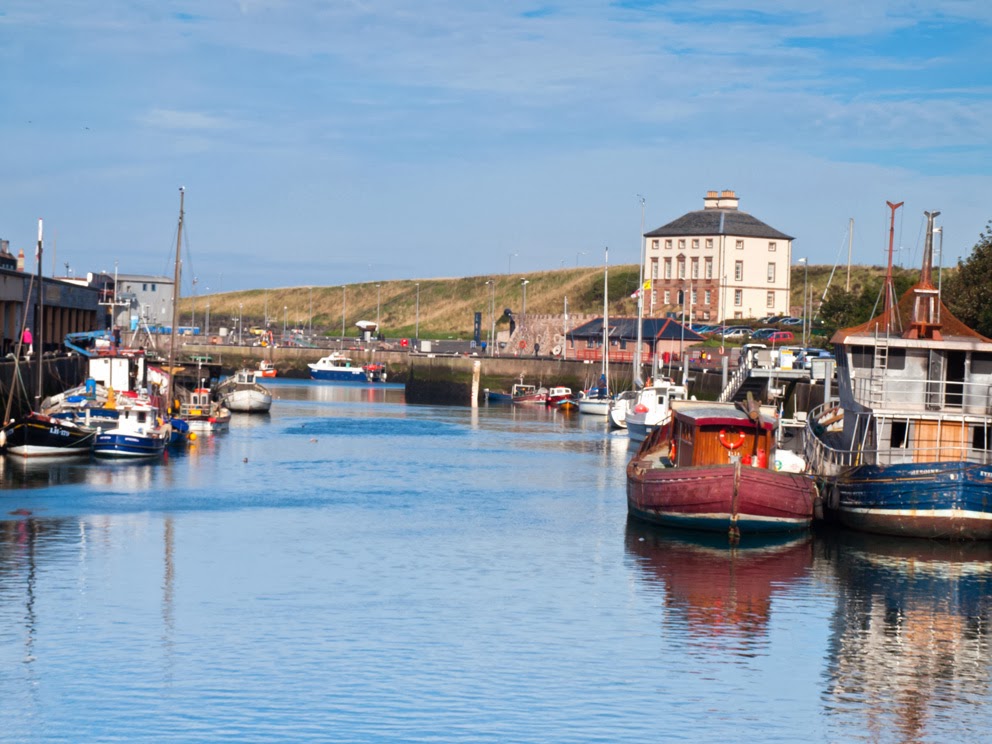Amble
was originally located well to the south of the mouth of the River Coquet,
however in March 1764, the river below Warkworth changed its course due to
heavy rain. The river sought its most direct route to the sea and broke its
banks across a broad meander and as a consequence Amble found itself less than
one third of a mile from the new river mouth.
In
1204 the spelling used was Ambell’ and by 1610 it was Anbell’. However by 1769 The
modern name of Amble was being used. The name Amble is generally accepted to
mean ‘Anna’s Bill’ or ‘Anna’s Promontory’. For a short time in the 1980’s Amble was
officially known as Amble-by-the-Sea, however this was dropped in 1985 and the
town reverted back to being called Amble.
Amble
owes much of its growth and early prosperity to the 19th century coalfields
from which it used to ship coal to southern England
Other
industries, such as ship building and repair, and sea fishing, expanded with
the growth of the town, although traditional Northumbrian fishing vessels such
as cobles have sheltered in the natural harbour here for many centuries
previously.
To the north of the town, along
the riverside land known as The Braid was originally the site of a shipyard.
Boat building began in Amble at the end of the 18th century when the
‘Chevington Oak’ was built with wood from nearby Chevington Woods. There was
also a joinery yard and sawmill on the Braid on the site where the Marina Arms
now stands.
The harbour had a
brickworks, boatyards, and an extensive network of high-level railway lines
serving timber coal staithes around the harbour at the Radcliffe and Broomhill
Quays. The town’s railway station was built in 1878 and was approached by a
sloping ramp from Church Street England
Today,
Amble is Northumberland's most important fishing centre north of the River
Tyne. The fishing industry survives, although it has reduced numbers of vessels
now, as does a small marine industry - mainly concentrated around the
construction and repair of yachts and other pleasure craft. Leisure sailing has
also become important and, as well as the marina, the town has a vibrant yacht
and boat club. A small industrial estate is located to the southwest of the
town, whose clients include food processing plants, vehicle repairs and
telecommunications companies. Amble also has a number of good shops including Tesco
and Boots, gift shops, and many pubs and fast food outlets. Tourism now forms
an important sector of Amble’s economy. Part of the harbour was redeveloped
into a marina with secure berths for 250 vessels which opened in 1987. The
outer boundary of the marina incorporates one of the original timber jetties
from the early harbour as part of the old river bed was reclaimed during
construction.





















